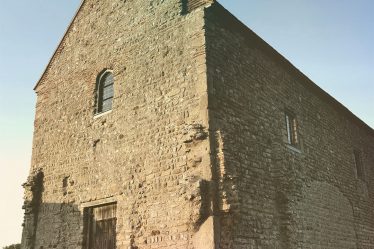
The most destructive earthquake known in Britain happened at 9.18 am, on April 22nd 1884. The epicentre at Peldon just 8.3 km from the now decommissioned Bradwell A nuclear power station. The earthquake only lasted five to ten seconds or so. But in that brief period, whole villages were wrecked and Colchester was reduced to chaos. And in some places, gaping fissures opened up in the ground, some over 100 yards long, according to The Colchester Archaeological Trust.
The epicentre was about four miles south of Colchester’s town centre, around the villages of Abberton, Peldon and Wivenhoe. The worst structural damage occurred within 20 miles or so of this area, although the earthquake was felt as far afield as Exeter, Yorkshire, and even Boulogne and Ostend on the Continental coast. It would be fascinating to know of any local records of the impact on Bradwell and the Dengie Peninsular, being so close to the epicentre.
One might also reasonably ask the question, are we on or very close to a vault line? And if so what are the implications for any new nuclear development plans?
The answer to these questions may point out why the Bradwell B developers are so keen to undertake further ground investigation works before they proceed with detailed plans. In a recent article on the Ground Engineering website relating to work Jacobs had carried out on Bradwell B, reference was made to ground investigation works previously carried out in 1987. This earlier survey, according to the article, identified the presence of a fault within the proposed development area. Yes you read that right, a known seismic fault on a site earmarked for new nuclear power. I’m no geologist, but is it not beyond the realms of possibility that this was the same fault line responsible for the devastating Colchester earthquake of 1884 mentioned above, possibly the most destructive the UK has experienced?
Could this fault be the reason why NIREX abandoned its plans for a shallow nuclear disposal site here at Bradwell On Sea? And what does this mean for Bradwell B’s would-be developers and the suitability of this site?
Unfortunately, Maldon District Council (MDC) has lost the appeal hearing for the Bradwell B ground investigation works which will presumably now go ahead. The planning inspectorate stated that MDC had not behaved unreasonably in refusing permission on ecological grounds. The inspector has now allowed the works to go ahead only after the developer submitted further data and control measures, and due to their temporary nature. We should take heart that this process (the refusal and appeal) has shown that the developers will have an uphill struggle meeting environmental protections as this project develops. The Blackwater Estuary and our shoreline is a critical and sensitive area for its flora and fauna and we will continue to do what we can to protect it from the threat of the Bradwell B development. Meanwhile, we will be keeping a close eye on those ground investigation works and continue to press the developers for answers to all our questions, including those related to fault lines!
On behalf of the BAN team, I would like to end by wishing you and your loved ones a Happy Christmas and New Year.
Linda Gemmill, Team Coordinator, Bradwell B Action Network (BAN)




